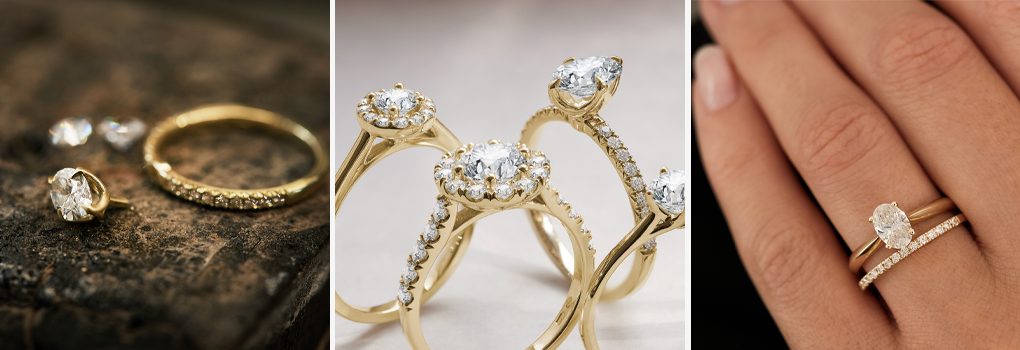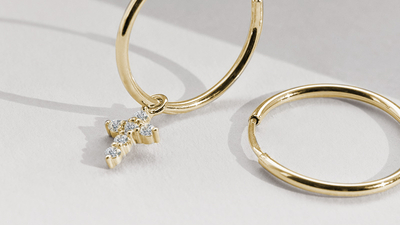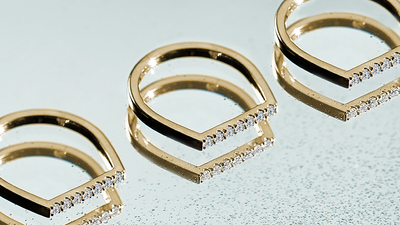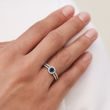Luxury Sapphire and Diamond Ring in White Gold
Breathtaking 14k white gold ring decorated with a deep blue sapphire and white diamonds in a brilliant cut. In a popular halo design, this style of ring is particularly perfect for an engagement but is still unique with a strong central jewel, surrounded by brilliant diamonds. The ring has a double band, lined in diamonds, making it extremely luxurious. An incredible way to surprise your future fiancée.
Rings labeled as in stock are available in only a few select sizes. Enter your desired size in the product request box in the cart, before checkout, and we’ll contact you to confirm its availability. All rings come in an elegant gift box along with a Certificate of Authenticity. Find out more about our sizing in the ring size guide.
Availability: in stock & ready to ship.
| CODE | K0804052 |
| Material |
White Gold fineness 14 karat 585/1000 |
| Gemstone |
Blue sapphire Origin natural Cut round diameter 4.5 mm weight 0.450 ct Diamond Origin natural cut round clarity SI color G diameter 1.1-1.2 mm weight 0.352 ct |
| width | 3.4 mm |
| weight | 3.05 g |
Jewelry from the KLENOTA ATELIER
Located in the very heart of the Old Town of Prague, our atelier and workshop draws inspiration from the centuries of local goldsmithing traditions to create timeless yet modern jewelry. Each piece is handcrafted to perfection by our skilled artisans, using only high quality materials from verified sources so you can cherish our jewelry for years to come. Discover the true meaning of elegance with KLENOTA.

Sapphire jewelry
Sapphires are among the most popular gemstones and together with emeralds and rubies, they make up the big three of precious stones. Sapphires are corundums with a hardness of 9, so only diamonds are harder than them. They are very durable and retain their beautiful appearance even with minimal care.
COLOR: Sapphires are known for their royal blue color, but apart from red rubies, all other corundums are also classified as sapphires. You will therefore also come across sapphires in a range of colors including pink and yellow.
CUT: Jewelry with sapphires is most often decorated with stones in a round cut. However other shapes are also used, such as the oval cut (especially popular in rings and necklaces) or fantasy shapes such as the marquise, heart or teardrop.
WEIGHT: The weight of a sapphire is expressed in carats (ct) to 2 decimal places - 1 ct = 0.20 g. With earrings and jewelry which have multiple sapphires, we always state the total number of carats of all the stones.
CARE: Soak jewelry with sapphires in warm soapy water and clean it with a soft brush. You should protect the stones from pressure and temperature shocks.

Diamond jewelry
In the process of evaluating and certifying diamonds, they are assessed based on four fundamental parameters which are called the 4Cs: cut, clarity, color, and carat. These four properties then significantly influence the price of a diamond.
CUT: The right cut gives a diamond its radiant luster. The most popular cut is a round one known as the brilliant cut. Diamonds can also be cut into a wide array of “fantasy” cuts which include the marquise, baguette, heart, teardrop, oval, and princess (a three-sided or four-sided cut with sharp corners which is especially popular for engagement rings).
CLARITY: Clarity is determined by the number, size, and distribution of any inclusions (internal impurities) in a diamond:
- IF (Internally Flawless) – clear diamonds without any inclusions,
- VVS 1, VVS 2 (Very Very Slightly Included) – diamonds with very small inclusions,
- VS 1, VS 2 (Very Slightly Included) – diamonds with small inclusions,
- SI 1, SI 2 (Slightly Included) – diamonds with inclusions which can be seen with a magnifying glass,
- I1, I2, I3 (Included), also labeled as “P” in the Czech Republic – diamonds with medium to larger inclusions visible to the naked eye.
COLOR: The color of colorless to yellow diamonds is evaluated based on an international scale:
- D to F – colorless diamonds;
- G to J – near colorless diamonds;
- K to M – diamonds with a touch of yellow;
- N to Z – diamonds with a brown-yellow color.
Other colors of diamonds are simply called fancy. Some of our color diamonds are treated to enhance their color.
CARAT: The weight of diamonds is quoted in carats (ct), expressed to two decimal places, for example 0.25 ct. One (1) ct is equal to 0.2 grams. With earrings and jewelry which has multiple diamonds, we always state the total number of carats of all the diamonds.






























